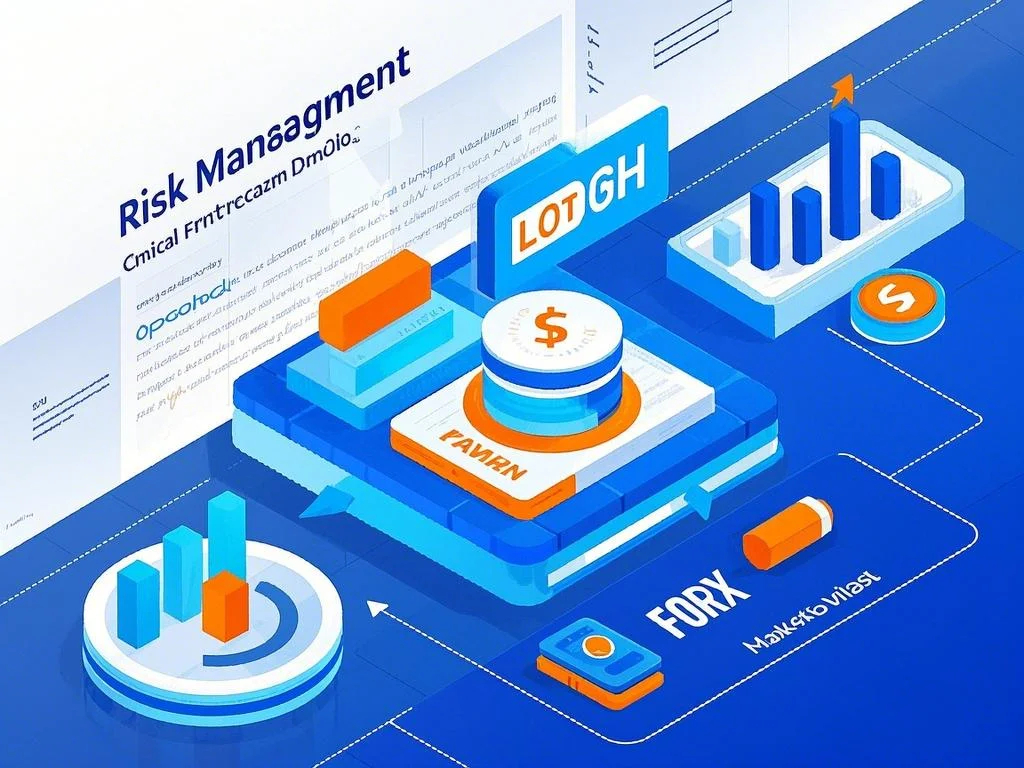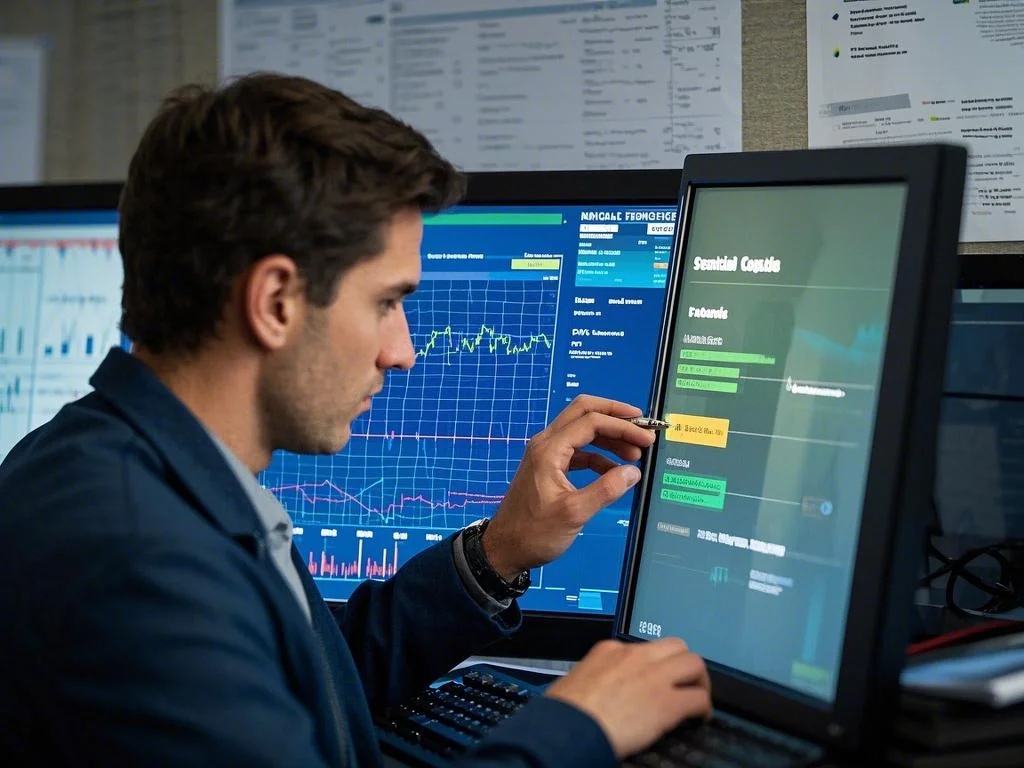Forex leverage is one of the most powerful tools available to traders, allowing them to control larger positions with a relatively small amount of capital. While leverage can amplify profits, it also increases the potential for losses, making it a double-edged sword. For beginners and experienced traders alike, understanding how to use forex leverage effectively is crucial to managing risk and achieving long-term success in currency trading. In this article, we’ll explore what forex leverage is, how it works, and how you can use it to your advantage while minimizing risks.
What is Forex Leverage?
Forex leverage is a mechanism that allows traders to control a larger position in the market than their initial capital would normally permit. It is expressed as a ratio, such as 50:1, 100:1, or even 500:1, indicating how much larger the position is compared to the trader’s margin (the amount of capital required to open the trade). For example, with 100:1 leverage, a trader can control a $100,000 position with just $1,000 of their own money.
Leverage is provided by forex brokers and is a standard feature of trading platforms. It enables traders to maximize their potential returns by amplifying the impact of price movements. However, it’s important to remember that leverage also amplifies losses. If the market moves against you, your losses will be magnified in proportion to the leverage used. This makes leverage a powerful but risky tool that requires careful management.

How Does Forex Leverage Work?
To understand how forex leverage works, let’s look at an example. Suppose you have a trading account with $1,000 and your broker offers 100:1 leverage. This means you can control a position worth $100,000. If you buy 1 standard lot of EUR/USD (which is equivalent to 100,000 units of the base currency), your margin requirement would be $1,000 (1% of $100,000).
If the EUR/USD exchange rate increases by 1%, your $100,000 position would gain $1,000 in value, effectively doubling your initial capital. However, if the exchange rate decreases by 1%, you would lose $1,000, wiping out your entire account balance. This example illustrates the potential rewards and risks of using leverage. While it can significantly increase your profits, it can also lead to substantial losses if the market moves against you.
Benefits of Using Forex Leverage
When used correctly, forex leverage offers several benefits for traders. Here are some of the key advantages:
Increased Profit Potential
The primary benefit of leverage is that it allows traders to maximize their profit potential. By controlling larger positions with a smaller amount of capital, traders can achieve higher returns on their investments. This is particularly useful in the forex market, where price movements are often small and measured in pips (percentage in points). Leverage enables traders to capitalize on these small movements and generate significant profits.
Access to Larger Markets
Forex leverage also provides access to larger markets that would otherwise be out of reach for retail traders. For example, without leverage, a trader with $1,000 would only be able to trade micro lots (1,000 units of the base currency). With 100:1 leverage, the same trader can control a standard lot (100,000 units), giving them access to more significant trading opportunities and potentially higher profits.
Flexibility and Diversification
Leverage allows traders to diversify their portfolios by opening multiple positions across different currency pairs. This flexibility enables traders to spread their risk and take advantage of various market opportunities. For example, a trader might use leverage to simultaneously trade EUR/USD, GBP/USD, and USD/JPY, increasing their chances of success while minimizing exposure to any single currency pair.
Risks of Using Forex Leverage
While leverage offers significant benefits, it also comes with substantial risks. Here are some of the key challenges to be aware of:
Amplified Losses
The most significant risk of using leverage is that it amplifies losses as well as profits. If the market moves against you, your losses will be magnified in proportion to the leverage used. For example, if you use 100:1 leverage and the market moves 1% against your position, you could lose your entire account balance. This makes it essential to use leverage cautiously and implement effective risk management strategies.
Margin Calls
When trading with leverage, your broker will require you to maintain a minimum margin level in your account. If your losses exceed this level, you may receive a margin call, requiring you to deposit additional funds to keep your positions open. If you fail to meet the margin call, your broker may close your positions, resulting in significant losses. To avoid margin calls, it’s important to monitor your account balance and use stop-loss orders to limit your losses.
Emotional Trading
Leverage can also lead to emotional trading, as the potential for large profits and losses can cloud your judgment. Traders may be tempted to take excessive risks or deviate from their trading plan in pursuit of quick gains. This can lead to impulsive decisions and significant losses. To avoid emotional trading, it’s important to stick to your strategy and use leverage responsibly.
How to Use Forex Leverage Effectively
To use forex leverage effectively, it’s essential to balance the potential rewards with the associated risks. Here are some tips to help you make the most of leverage while minimizing your exposure:
Start with Lower Leverage
If you’re new to forex trading, it’s a good idea to start with lower leverage ratios, such as 10:1 or 20:1. This allows you to gain experience and build confidence without exposing yourself to excessive risk. As you become more comfortable with leverage, you can gradually increase the ratio, but always within your risk tolerance.
Use Stop-Loss Orders
Stop-loss orders are a critical risk management tool when trading with leverage. They automatically close your position if the market moves against you, limiting your losses and protecting your capital. When setting a stop-loss order, consider factors like the currency pair’s volatility and your risk tolerance. A well-placed stop-loss order can help you manage risk and avoid significant losses.
Monitor Your Margin Level
When trading with leverage, it’s essential to monitor your margin level and ensure that you have sufficient funds in your account to cover potential losses. Most brokers provide a margin level indicator, which shows the percentage of your account balance that is available for trading. If your margin level falls below a certain threshold, you may receive a margin call. To avoid this, maintain a healthy margin level and avoid over-leveraging your account.
Final Thoughts
Forex leverage is a powerful tool that can significantly enhance your trading potential, but it must be used with caution. By understanding how leverage works, balancing its benefits and risks, and implementing effective risk management strategies, you can use leverage to your advantage while protecting your capital. Whether you’re a beginner or an experienced trader, leveraging your trades responsibly is key to achieving long-term success in currency trading.
Remember, leverage is not a shortcut to wealth—it’s a tool that requires skill, discipline, and a solid understanding of the market. By staying informed about forex market analysis and following forex trading tips, you can make informed decisions and maximize your trading potential. With the right approach, you can turn forex leverage into a valuable asset in your trading toolkit.
